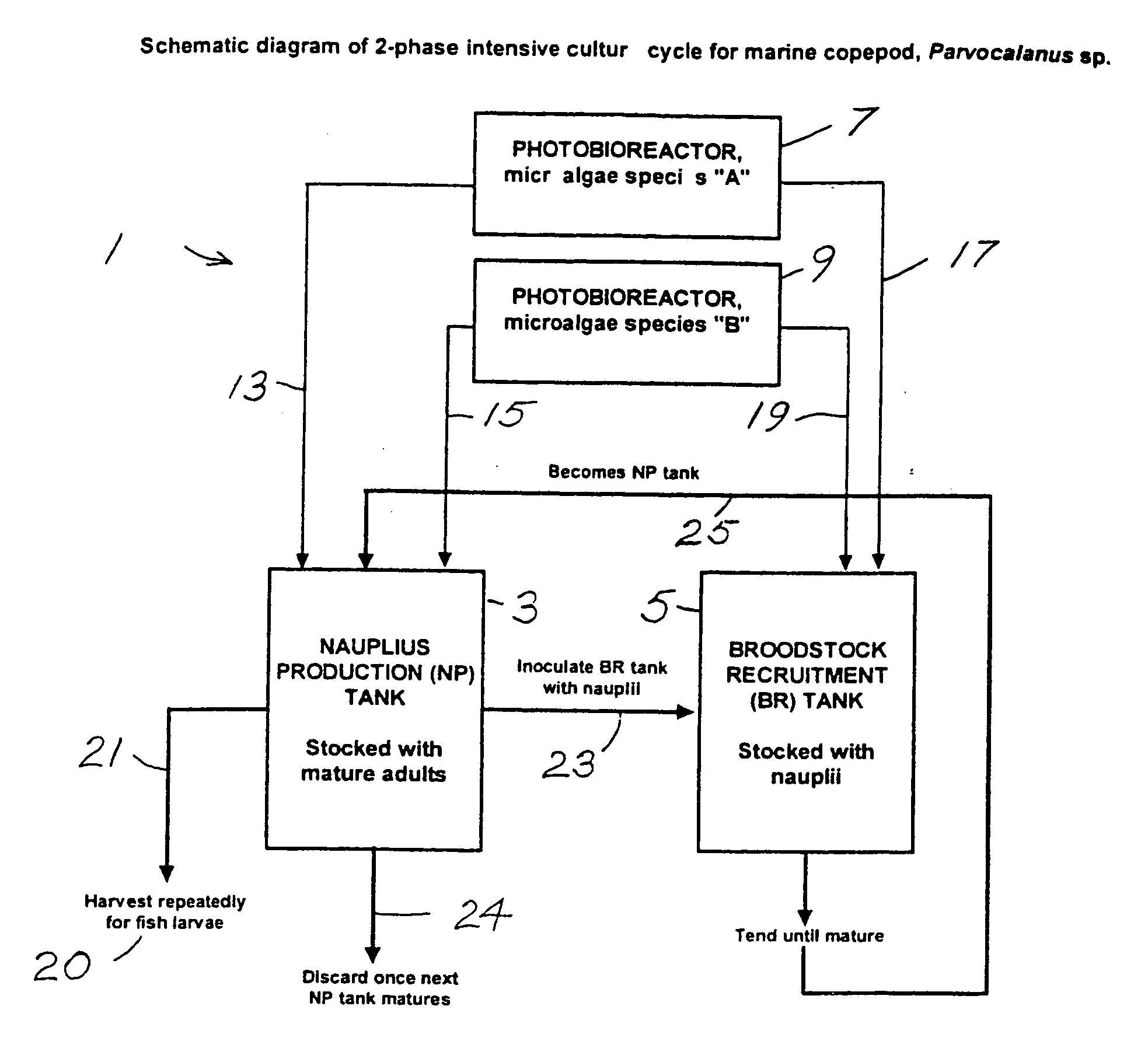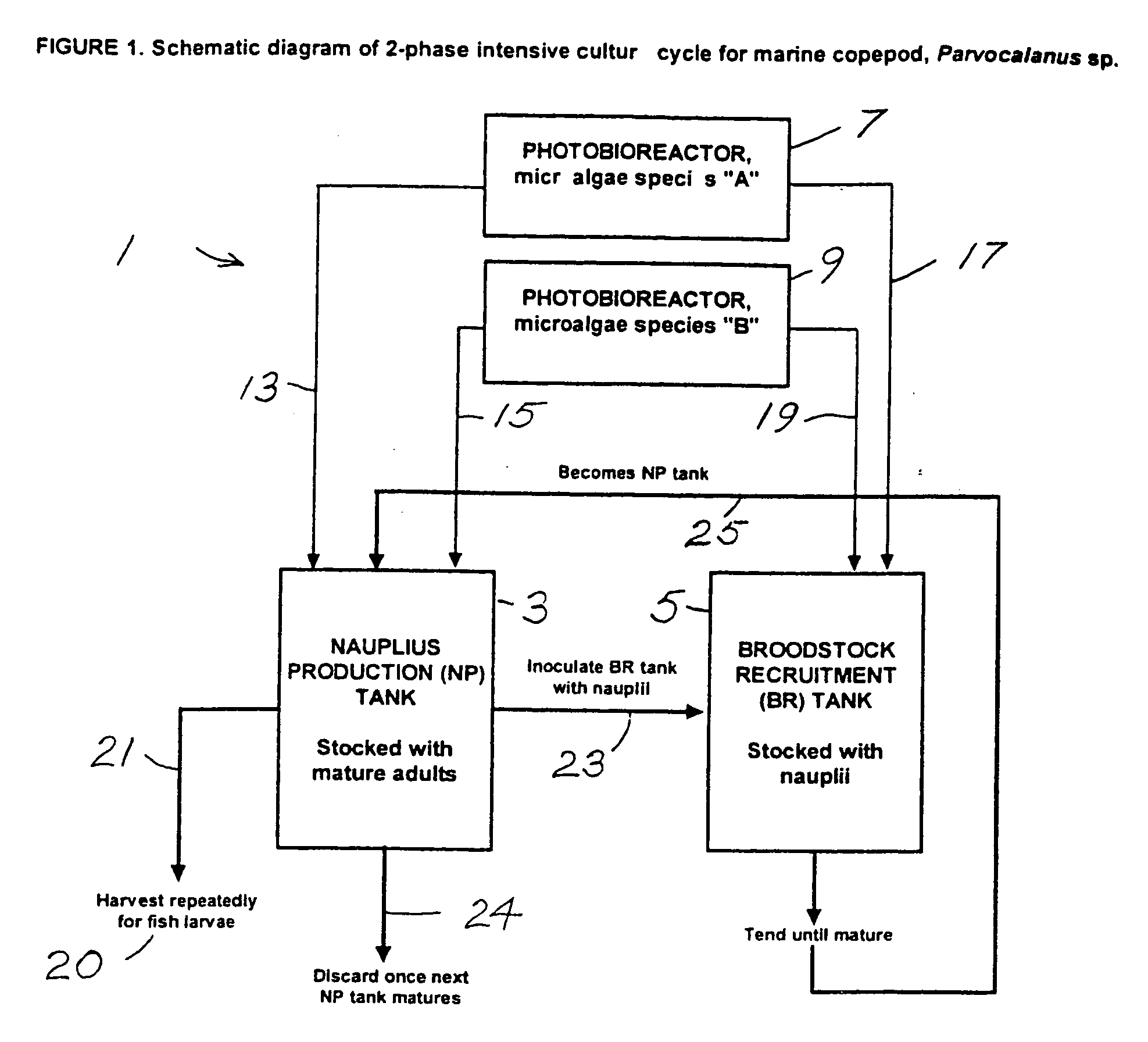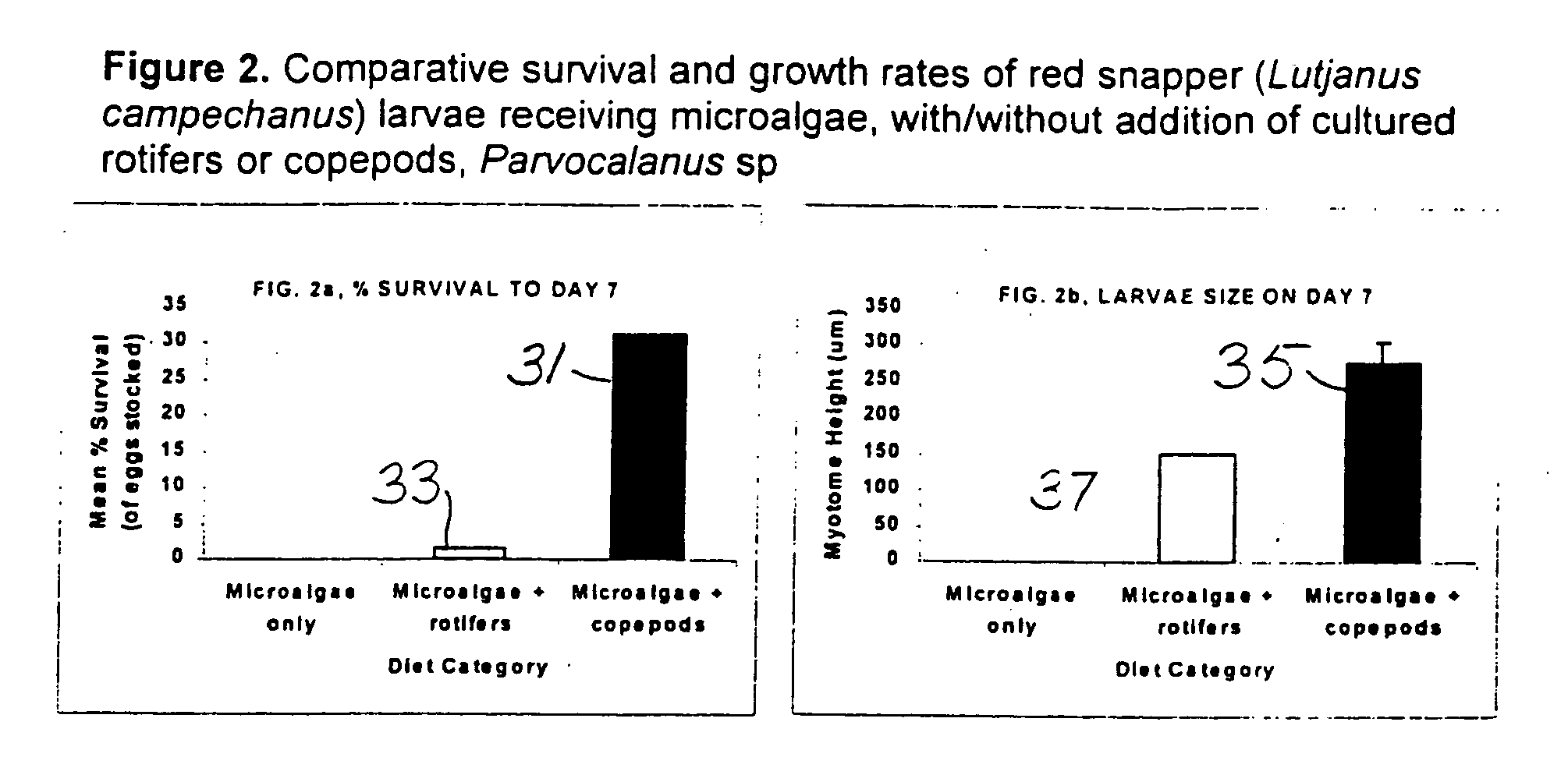Isolation, culture, and use of marine copepods in aquaculture
a technology for copepods and aquaculture, applied in the field of marine larviculture, can solve the problems of calanoid copepod species not reaching sufficient population densities to allow economic viability, high variability in productivity using this method, etc., and achieves rapid growth, improved survival, and enhanced survival and growth.
- Summary
- Abstract
- Description
- Claims
- Application Information
AI Technical Summary
Benefits of technology
Problems solved by technology
Method used
Image
Examples
Embodiment Construction
[0021] Improved methods and materials are provided for aquaculture of difficult-to-rear marine fish and other aquatic animals. Cultured copepods are employed as live feed grown concomitantly in situ on microalgae in the presence of the fish larvae or grown independently in separate tanks and fed to the fish larvae, both under selected controlled growth conditions. Particularly, Parvocalanus sp is employed as the live feed. The Parvocalanus sp can be grown on a variety of individual or mixtures of microalgae and fed to the fish larvae, where a broader spectrum of microalgae feed may be used when the copepods are grown in situ.
[0022]Parvocalanus is a large family having a large number of species. Of particular interest is a species that can be found in the coral reef areas of Kaneohe Bay, Oahu, USA. The subject Parvocalanus sp. is readily and reproducibly isolated from Kaneohe Bay and the same or equivalent species may be found in other oceanic sources. In referring to Parvocalanus s...
PUM
 Login to View More
Login to View More Abstract
Description
Claims
Application Information
 Login to View More
Login to View More - R&D
- Intellectual Property
- Life Sciences
- Materials
- Tech Scout
- Unparalleled Data Quality
- Higher Quality Content
- 60% Fewer Hallucinations
Browse by: Latest US Patents, China's latest patents, Technical Efficacy Thesaurus, Application Domain, Technology Topic, Popular Technical Reports.
© 2025 PatSnap. All rights reserved.Legal|Privacy policy|Modern Slavery Act Transparency Statement|Sitemap|About US| Contact US: help@patsnap.com



